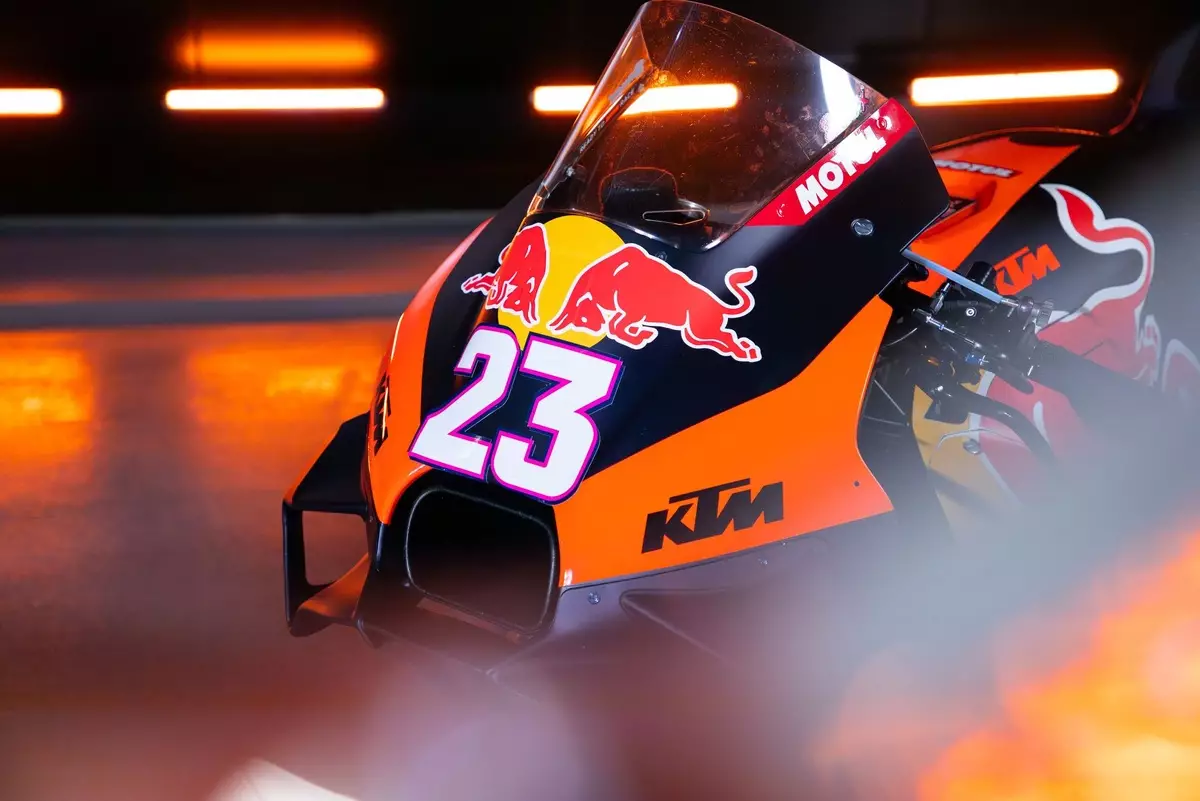KTM, the renowned Austrian motorcycle manufacturer, is making headlines for more than just its latest MotoGP development. At the launch of its 2025 RC16 bikes in a joint presentation with its satellite team, Tech3, the company faced the dual challenge of showcasing technological advancements while grappling with significant financial strains. During this pivotal moment, the absence of discussions regarding its financial turmoil was both telling and strategic. By focusing solely on motorsport aspirations and the racing spirit, KTM is attempting to project strength as it prepares for the upcoming season amidst mounting economic pressures.
KTM’s precarious financial situation is not merely a rumor; it is a stark reality that looms over the company’s operations. With debts reaching €2.2 billion, the company’s future in MotoGP is shrouded in uncertainty. Creditors are poised to decide on a resolution to KTM’s insolvency on February 25, prompting speculation about the firm’s ability to continue in the highly competitive world of motorcycle racing. This financial instability is juxtaposed with the high expectations associated with the MotoGP platform, forcing KTM to navigate a tightrope between fiscal responsibility and competitive ambition.
Despite these pressing issues, KTM’s leadership, particularly Motorsport Director Pit Beirer, has chosen to emphasize the brand’s racing commitment. By declaring, “we are here to race,” Beirer aims to instill a sense of continuity within the company, reassuring fans and stakeholders that the passion for racing remains undeterred by economic trials. This rhetoric highlights an essential aspect of KTM’s identity: a brand built on competition and innovation that seeks to maintain its presence in the sport even when external factors challenge its viability.
Racing with Optimism: The 2025 Season Ahead
As the company gears up for the 2025 MotoGP season, KTM showcases a mix of cautious optimism and substantial investment in its bike development. With the unveiling of four identical RC16 machines, it signals a commitment to continue its racing heritage and push the boundaries of performance. The pre-recorded videos from the launch, while lacking live interaction, reflect a calculated approach to maintain brand presence in the media while shying away from the distressing financial narrative.
Team manager Aki Ajo expressed an upbeat perspective on the forthcoming season, emphasizing the work accomplished during the winter months. The ambitious goals set for the RC16 suggest that rather than retreating in the face of adversity, KTM is rallying its resources and focusing on enhancing competitive performance. This determination to innovate and improve positions the brand well against competitors who may not have faced similar challenges. Ajo’s comments on the strong team dynamics and experienced riders serve to reinforce a culture of unity and tenacity that is critical in high-stakes environments like MotoGP.
The commitment to racing excellence carries weight beyond immediate results on the track. The MotoGP platform serves as a crucial marketing arena for KTM, enhancing brand visibility and consumer engagement across global markets. Therefore, navigating through financial difficulties becomes a balancing act, where the company must maintain its legacy while developing plans for sustainability and growth.
As the creditors deliberate on the company’s fate, it is vital to consider the long-term ramifications of KTM’s choices. Will the decision to prioritize racing lead to necessary funding and support from investors, or could it jeopardize the very foundation upon which the brand is built? The coming months will ultimately serve as a testament to the resilience of KTM’s culture and its commitment to overcoming adversity.
While the launch of the 2025 MotoGP bike was laden with ambition and aspiration, the backdrop of financial upheaval cannot be dismissed lightly. The buzz around KTM’s racing intentions stands in stark contrast to the uncertainty that surrounds its financial health. As the MotoGP season approaches, the world watches closely—will KTM emerge as a determined competitor dedicated to racing, or will the financial strains force it to recalibrate its ambitions in a sport that thrives on speed, innovation, and relentless pursuit of excellence? The answers to these questions will undoubtedly shape the narrative of KTM in the years to come, determining not only its legacy within MotoGP but its standing in the global motorcycle industry.

